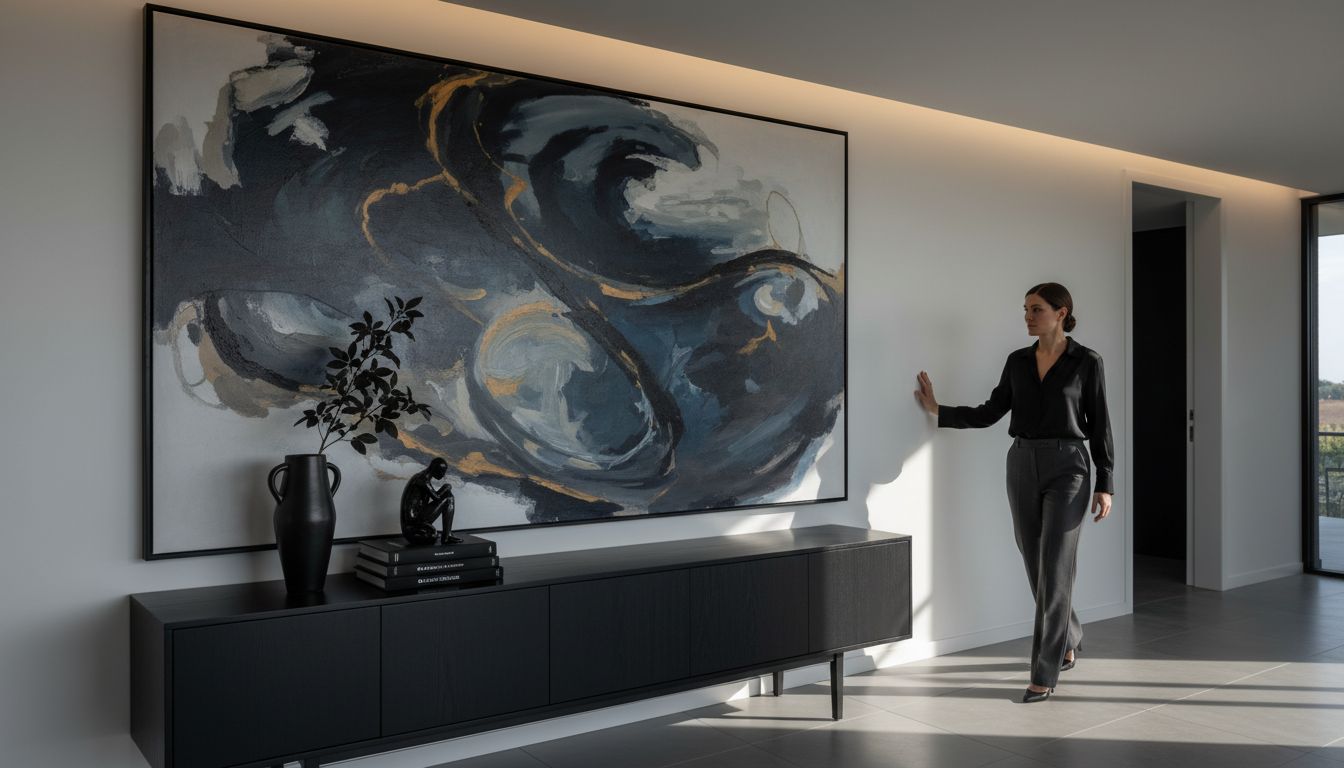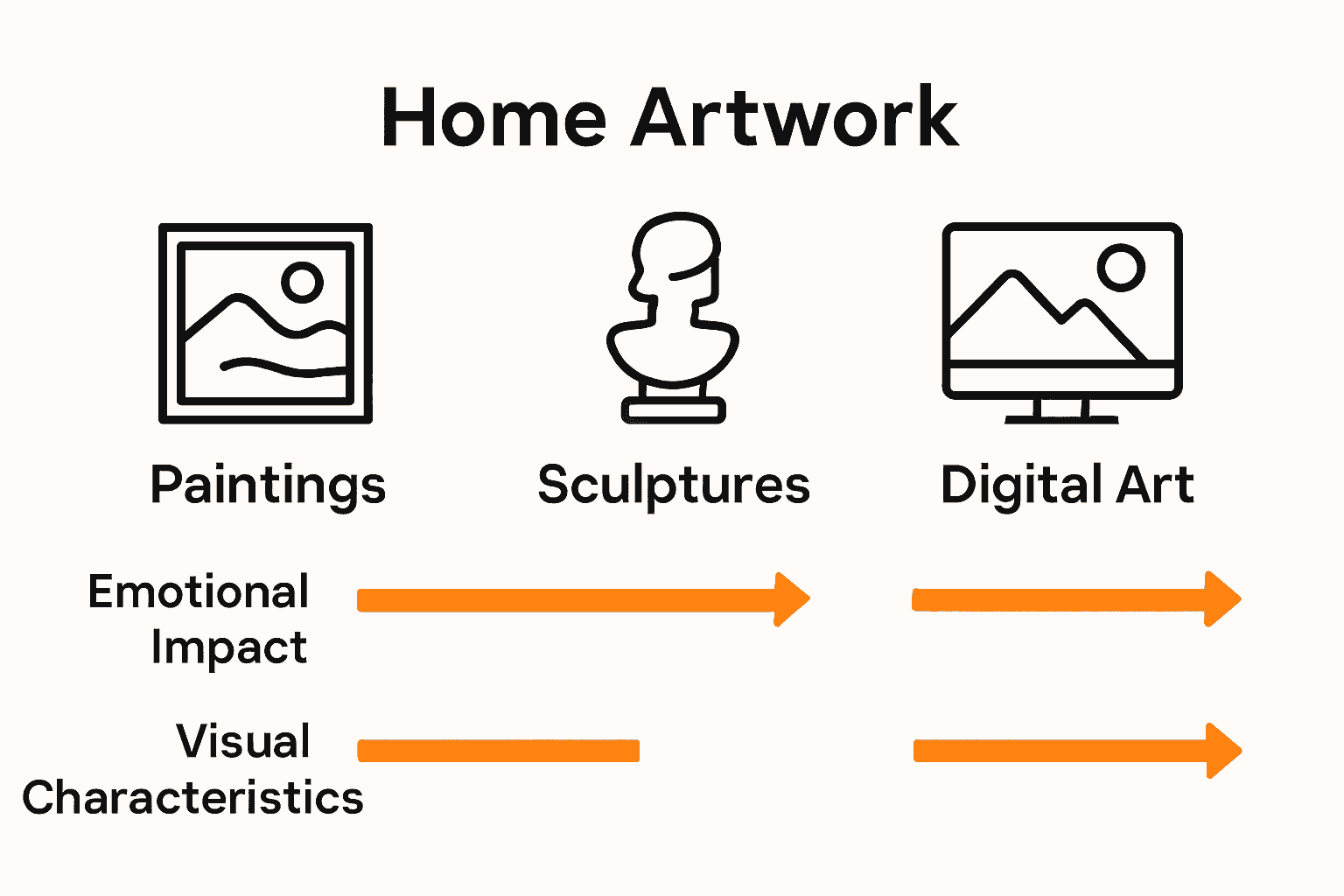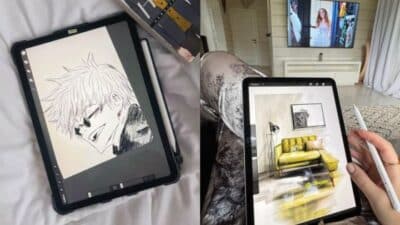Did you know that over 80 percent of homeowners say art makes their space feel more welcoming and personal? The right artwork does much more than fill an empty wall. It shapes moods, sparks conversations, and can even influence how you feel in your own home. Discover how choosing and placing artwork turns an ordinary room into a reflection of identity and emotion, making every corner truly your own.
Table of Contents
- Defining Artwork’s Role in Home Spaces
- Types of Home Artwork and Key Differences
- How Artwork Influences Interior Design
- Emotional and Psychological Benefits of Art
- Placement Strategies and Common Mistakes
Key Takeaways
| Point | Details |
|---|---|
| Artwork as Narrative | Artwork transforms home spaces into personal narratives, reflecting identity and emotions beyond mere decoration. |
| Emotional and Psychological Impact | Art has proven psychological benefits, including stress alleviation and improved mental health, enhancing overall well-being. |
| Strategic Placement is Key | Effective positioning of artwork can dramatically influence spatial perception and emotional atmosphere in a room. |
| Diverse Artwork Types | Various types of artwork, such as paintings, photographs, and digital art, offer unique emotional resonance and visual dynamics. |
Defining Artwork’s Role in Home Spaces
Artwork transcends mere decoration. It’s a powerful visual language that transforms living spaces from simple functional areas into deeply personal narratives. Home artwork serves multiple profound roles beyond aesthetic enhancement – it communicates personal identity, evokes emotional responses, and creates meaningful spatial experiences.


At its core, artwork acts as a dynamic psychological tool within home environments. Each piece becomes more than a visual element – it’s a deliberate expression of personal taste, cultural background, and individual storytelling. Whether it’s a vintage photograph capturing family history, an abstract painting reflecting inner emotional landscapes, or a carefully curated collection of prints, artwork communicates complex narratives without uttering a single word. In our guide on living space design, we explore how strategic art placement can dramatically transform interior atmospheres.
The functional dimensions of home artwork extend far beyond visual appeal. Art pieces can:- Establish focal points within rooms- Create visual balance and spatial harmony- Manipulate perceived room dimensions- Introduce color and textural complexity- Reflect personal memories and emotional connections
Psychologically, artwork functions as an environmental choreographer. It guides viewer attention, establishes mood, and creates subtle emotional narratives within living spaces. A carefully selected piece can make a room feel expansive or intimate, energetic or serene – demonstrating art’s remarkable power to shape human perception and experience beyond simple visual aesthetics.

Types of Home Artwork and Key Differences
Home artwork represents a diverse landscape of visual expressions, each type offering unique characteristics and emotional resonance. Artwork categories range from traditional mediums like paintings and photographs to more contemporary installations and mixed-media pieces, each transforming living spaces in distinctive ways.
According to Lane County Historical Society, contemporary art has evolved beyond galleries, becoming an essential element of everyday visual environments. The primary artwork types for home spaces include:
Here’s a summary of key home artwork types and their unique characteristics:
| Artwork Type | Key Features | Emotional Impact |
|---|---|---|
| Paintings | Canvas-based Abstract or representational | Conveys mood Personal expression |
| Photographs | Personal memories Moments captured | Evokes nostalgia Authenticity |
| Sculptures | 3D objects Textural depth | Adds drama Tactile interest |
| Prints | Reproduced art Affordable variety | Accessibility Versatile appeal |
| Mixed Media | Combined materials Innovative techniques | Creative excitement Surprise |
| Digital Art | Technology-driven Modern visuals | Fresh perspective Dynamic energy |
- Paintings: Traditional canvas works ranging from abstract to representational styles
- Photographs: Personal or professional images capturing moments and memories
- Sculptures: Three-dimensional pieces that add depth and tactile interest
- Prints: Reproduced artworks offering accessibility and variety
- Mixed Media: Innovative combinations of materials and techniques
- Digital Art: Modern representations using technological platforms
Research indicates that contemporary art increasingly collaborates with interior design, highlighting how different artwork types can dramatically transform spatial perception. Each category brings unique visual languages – paintings communicate emotional landscapes, sculptures introduce physical dimensionality, and digital art offers cutting-edge interpretations of personal aesthetic preferences.

How Artwork Influences Interior Design
Interior design is fundamentally a narrative art, with artwork serving as its most expressive storytelling medium. Far beyond mere decorative elements, artworks transform spaces by creating visual dialogues, emotional landscapes, and sensory experiences that reshape how we perceive and interact with our environments.
According to Ohio University, spatial perception plays a crucial role in design. Artwork strategically influences this perception through several key mechanisms:
- Defining spatial boundaries
- Creating visual focal points
- Manipulating perceived room dimensions
- Establishing emotional atmospheres
- Guiding viewer movement and attention
Color psychology further amplifies artwork’s transformative potential. Research from Ohio University reveals that different colors evoke distinct emotional responses – warm tones like red and orange generate energy and passion, while cool blues and greens introduce calming, soothing qualities. By carefully selecting artwork with intentional color palettes, designers can dramatically shift a room’s emotional temperature and perceived spatial dynamics.
For additional inspiration on creative design approaches, explore our architecture inspiration guide to unlock new perspectives on integrating artwork into interior spaces.
Emotional and Psychological Benefits of Art


Art therapy transcends aesthetic pleasure, emerging as a powerful tool for psychological and emotional wellness. Our living spaces become more than physical environments – they transform into personal sanctuaries that support mental health, emotional regulation, and profound self-expression.
According to NYU Mind Research, art has remarkable scientific-backed psychological benefits. Scientists have discovered that simply appreciating creative works can:
- Alleviate stress
- Boost immune system functioning
- Improve overall mental health
- Enhance self-awareness
- Frame personal existence
- Stimulate joy and imagination
Research from NYU reveals even more profound therapeutic potential. Art immersion has demonstrated extraordinary medical implications, including easing anxiety and depression symptoms, reducing painkiller dependence, and potentially shortening hospital recovery times. For those seeking additional ways to integrate creativity into wellness, explore our drawing ideas for relaxation to discover innovative approaches to emotional healing through artistic expression.
Placement Strategies and Common Mistakes
Placing artwork is an intricate dance of visual harmony, where strategic positioning can elevate or undermine an entire room’s aesthetic. Understanding the nuanced principles of art placement transforms walls from mere surfaces into compelling visual narratives that communicate personal style and emotional depth.
According to Scientific Trends Research, artwork plays a crucial role in interior design, allowing individuals to express personal style and establish a room’s mood. Key placement strategies include:
- Considering eye-level positioning (typically 57-60 inches from floor)
- Creating visual balance across wall spaces
- Maintaining proportional relationships with furniture
- Using artwork to define spatial zones
- Avoiding overcrowding or sparse arrangements
Ohio University research emphasizes that spatial perception depends critically on strategic object placement. Common mistakes people make include hanging artwork too high, creating disconnected visual experiences, or failing to create meaningful connections between pieces and surrounding environments. When in doubt, use our home styling tips for beginners to refine your approach and transform your living spaces into cohesive, intentional visual experiences.
Elevate Your Home with the Power of Art
Struggling to create a living space that truly reflects your personality and emotional depth? The “Complete Guide to the Role of Artwork at Home” reveals how art does more than decorate — it shapes mood, tells your story, and transforms your environment into a personal sanctuary. Whether you want to establish focal points or balance spatial harmony, understanding art placement and its psychological benefits is key to unlocking your home’s full potential.
Discover how to harness the emotional and spatial power of paintings, sculptures, and digital art with inspiration from Art | Sky Rye Design and enhance your home’s atmosphere with expert ideas from our Home | Sky Rye Design collection.

Start transforming your living space today by exploring creative solutions at Sky Rye Design. Dive into expert insights and practical guidance that make embracing artwork a simple, rewarding step toward a home that speaks uniquely to you.
Frequently Asked Questions
What roles does artwork play in home spaces?
Artwork serves multiple roles in home spaces, including communicating personal identity, evoking emotional responses, creating meaningful spatial experiences, and enhancing aesthetic appeal. It acts as a psychological tool that helps shape perceptions and interactions within the home environment.
What are the different types of home artwork?
The most common types of home artwork include paintings, photographs, sculptures, prints, mixed media, and digital art. Each type offers unique characteristics and emotional resonance, catering to various aesthetic preferences and personal stories.
How does artwork impact interior design?
Artwork significantly impacts interior design by creating visual dialogues, defining spatial boundaries, establishing emotional atmospheres, and guiding viewer movement. It can manipulate perceived room dimensions and enhance overall sensory experiences in the space.
What are effective strategies for placing artwork in my home?
Effective strategies for placing artwork include positioning it at eye level (typically 57-60 inches from the floor), creating visual balance across the wall, maintaining proportional relationships with furniture, and avoiding overcrowding. Connecting artwork meaningfully to the surrounding environment is also crucial for cohesive aesthetics.
Recommended
- 3shares
- Facebook0
- Pinterest3
- Twitter0


